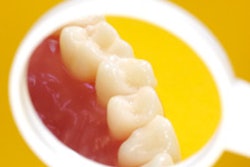
SAN FRANCISCO - Two presentations at the California Dental Association (CDA) fall meeting highlighted the evolving perspective on restorative materials. Both noted that dentists should stay with materials that they are comfortable with and work effectively.
However, one focused more on the application of newer restorative materials, while the other urged dentists to abandon older ones -- notably, amalgam.
"We have to get used to the fact that it (amalgam) is going to disappear," said Dan Nathanson, DMD, MSD, during his presentation "Keeping Up With New Materials and Technologies in a Contemporary Restorative Practice." In his view, the problem lies with U.S. dental schools continuing to teach the use of amalgam.
“Flowable composites have actually gotten worse in the last 30 years.”
Dr. Nathanson -- a professor and the chair of restorative sciences/biomaterials at Boston University -- is doing his part to change the views of aspiring dentists with regard to restorative materials -- old and new alike. "I ask my new students, 'Who thinks amalgam is a good material?' Most say yes," he explained. "Then I ask them, 'Can it seal margins? Is it inert or can it corrode? Is it the color of a tooth? Is it totally solid or does it change and break the cusp?'
"You're brainwashed in dental schools, and in five minutes I've changed that," Dr. Nathanson said.
The issue isn't safety, but the effect that amalgam has outside of dentistry on the environment, he emphasized. "Do you know any dentists who have died from amalgam toxicity? No. And it's not poisoning patients but mercury is poisoning the environment," he said.
Abroad, there are examples of how the profession has successfully moved away from the use of amalgam. "We should be as smart as the Europeans. They don't use it in Switzerland," he said. "And in Australia, glass ionomer is a final restoration -- they leave a little decay so the pulp is not exposed before sealing it in."
Stick with what works
Jeff Brucia, DDS, co-director of the FACE Institute, where he chairs the department of esthetics and adhesive material science, did not share Dr. Nathanson's aversion to amalgam during his presentation "Restorative Materials Update 2013." Instead, he focused on what missteps can lead to restoration failure and how to avoid them, and the characteristics of restorative materials that dentists should consider when selecting which ones to use.
Last year's release of the seventh-generation Scotchbond Universal by 3M ESPE garnered a great deal of attention in dentistry, but Dr. Brucia tempered expectations for its performance across a broad spectrum of indications.
"You have to look at this product as adequate, not great," he said. "But there is a clinical place for this. Post cementation, for example. But I would never do veneers. You need better ceramic and tooth bonding. It's good if you're looking for simple and fast."
An overarching theme was to be wary of new materials and to stay with the ones that work.
"Flowable composites have actually gotten worse in the last 30 years," Dr. Brucia noted. "Gordon [Christensen] did a study and his control was Heliobond (Ivoclar Vivadent). It did better in all the important areas than the others -- shrinkage, stress, and wear.
"The simplified systems should be limited to light-cured dentistry," he said.
Personal experience and established patterns of success should be the primary considerations when choosing materials. "Many of us are staying with the older systems. Why should you switch to a new adhesive material?" he asked. "If you aren't having problems with an older etching system, don't change a thing. If you are having sensitivity after trying everything, proceed to a newer one with caution."
Dr. Nathanson echoed this sentiment during his presentation. "My advice -- if it works, don't change it."
Ultimately, taking a little extra time to work with a proven material will have better long-term results. "You can't compromise with the steps. Charge a fee that will ensure that you do the dentistry right," he said. "I'm not going to be the fastest guy, but I know predictably that there will be very few problems."



















